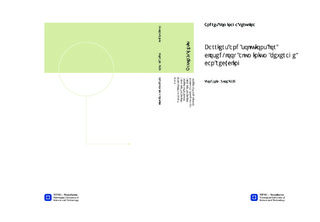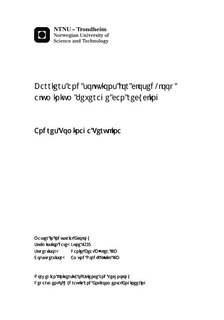| dc.contributor.advisor | Müller, Daniel Beat | nb_NO |
| dc.contributor.advisor | Løvik, Amund Nordli | nb_NO |
| dc.contributor.author | Tominaga Terukina, Andres | nb_NO |
| dc.date.accessioned | 2014-12-19T12:32:44Z | |
| dc.date.available | 2014-12-19T12:32:44Z | |
| dc.date.created | 2013-09-16 | nb_NO |
| dc.date.issued | 2013 | nb_NO |
| dc.identifier | 648683 | nb_NO |
| dc.identifier | ntnudaim:9905 | nb_NO |
| dc.identifier.uri | http://hdl.handle.net/11250/242389 | |
| dc.description.abstract | The aluminium can is the second largest end-use application in the USA. The aluminium sector in the USA has the target to increase the use of aluminium can scrap, in order to increase the economical and environmental benefits of recycling. The objective of this thesis is to identify the most important barriers to closed-loop recycling of aluminium beverage cans in the USA, and explore potential solutions. The research was conducted using the material flow analysis framework, creating a static model for the secondary aluminium production for cans, and a detailed dynamic model for beverage can recycling, to track various chemical elements through the cycle and include all relevant entry paths of contamination to the system. The dynamic model was developed to quantify the accumulation of alloying elements after each recycling loop in a can-to-can system, in order to predict the maximum recycling rate achievable. The results show that the main barrier to reach the 75% can recycling rate target set by the aluminium industry in the USA is the low recovery of UBCs after the use phase, where almost 50% of the UBCs are lost to landfills or incineration facilities. The results also shows that the surplus of alloying elements and entry of impurities will be a limiting factor in the recyclability of cans in the future, if the recycling rate increases and a close loop can-to-can system is achieved, owing to the sensitivity of the system to the entry of impurities. Without a better UBCs recovery and supply chain, further technological development for the reprocessing of aluminium cans, and improvement of production yields, it will not be possible to reach 100% recycling rate. | nb_NO |
| dc.language | eng | nb_NO |
| dc.publisher | Institutt for vann- og miljøteknikk | nb_NO |
| dc.title | Barriers and solutions for closed-loop aluminium beverage can recycling | nb_NO |
| dc.type | Master thesis | nb_NO |
| dc.source.pagenumber | 57 | nb_NO |
| dc.contributor.department | Norges teknisk-naturvitenskapelige universitet, Fakultet for ingeniørvitenskap og teknologi, Institutt for vann- og miljøteknikk | nb_NO |

